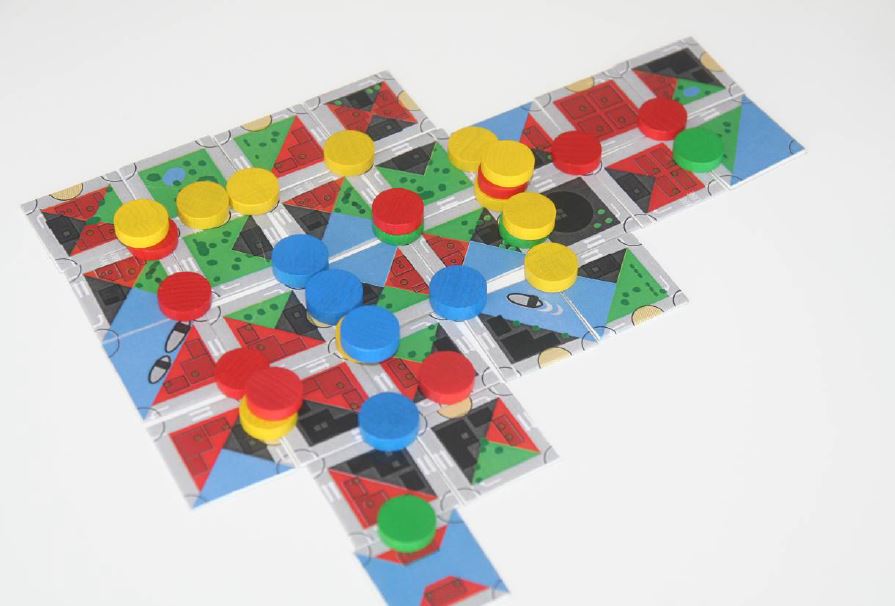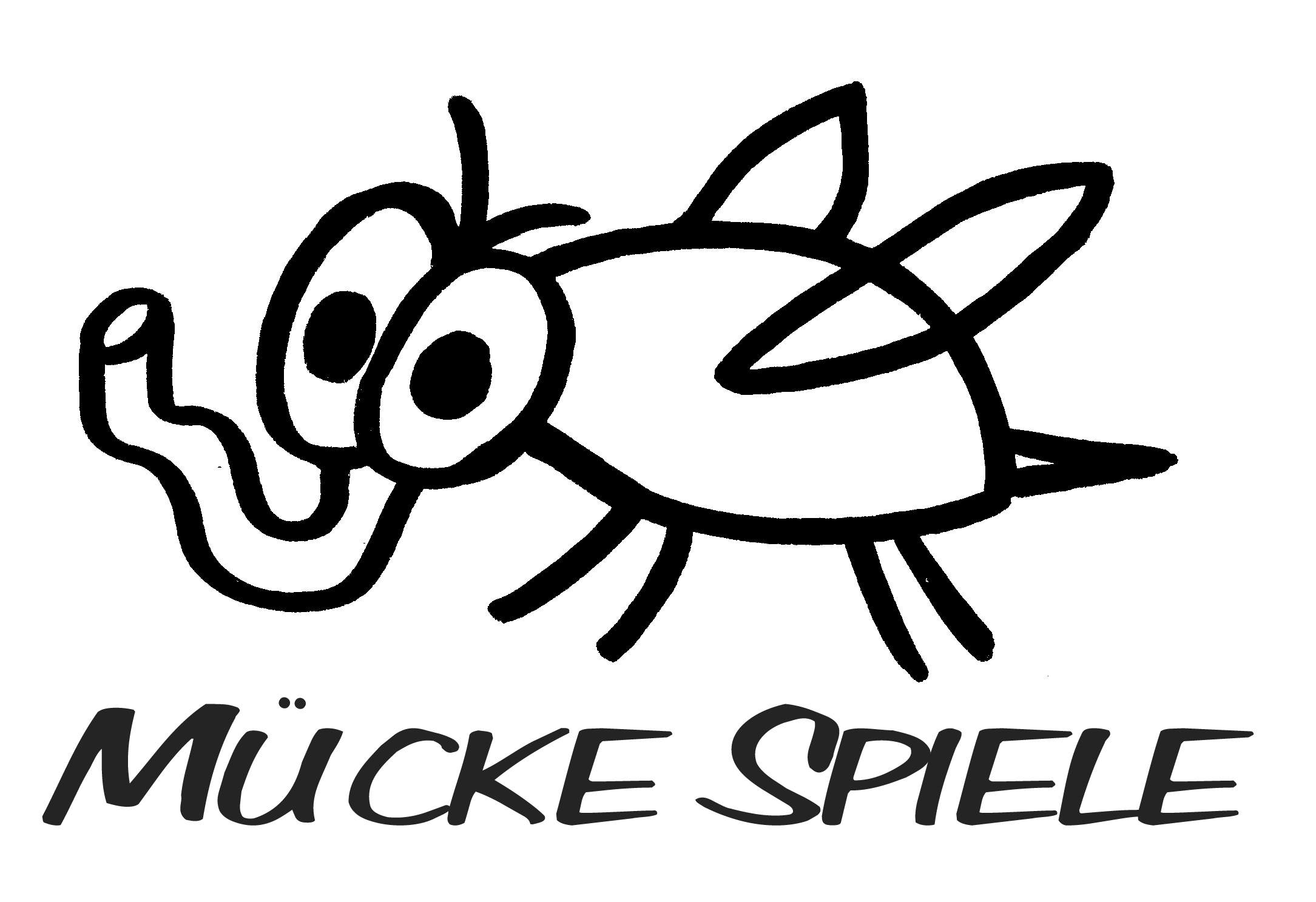Story and Title
Already during the design of the 2011 abstract game “Oblong” the playtesters would associate the square tiles as blocks in the typical American city pattern of perpendicularly arranged streets. Because the points that were placed or taken over by a player, were mostly along “streets” or in particular “neighborhoods”, the obvious association was that they were stops. In the current version “TraffIQ” the idea is to place taxis and buses in the city and to move through the traffic so that cars of competing players are removed from the game. Thus the working title of the game “Manhattan TraffIQ” (which combines the words “traffic” and “IQ” for “intelligence quotient”): The game is about positioning yourself as intelligently as possible in traffic.
Background
Manhattan TraffiQ took part in the author’s competition of www.spielmaterial.de in which the goal was to develop a game that fits into a small metal box. Ultimately, however, it was found that this was quite tight and a larger case would be good for the game, so the game was released in a normal box.
Changes from previous versions
- „TraffIQ“ compared to „Manhattan Sightseeing“ and „Manhattan Bus Stop“: To lend more tactical depth to the game player’s pieces (here “car”) may from now under certain conditions be added to the playing area (Version 1).
- Version 2.1 (07/2012): The gameplay changes fundamentally in one point: There is no need place 1 to 3 city tiles but you can select 2 of the possible actions, including laying and drawing. The choices are visualized by (7) action tiles laid out. The (49) city tiles are fundamentally redesigned. The streets around the edges of the counters are no longer light gray but black, to bring out the resulting road network more clearly. To do more clearly separate the water and green areas as contiguous areas from the built-up areas, the water and green spaces are displayed as triangles to the middle of the square tiles, built-up areas on the other hand only have a bar behind the street on the edge of the tile. This results in white areas, which also help to better identify the grid of the road network.
- Version 2.2 (08/2012): Green areas will be treated like bodies of water, that is by they have no more roads through them. The disruptive effect of green spaces and water on roads is needed to make the dominance of leading players more vulnerable.
- Version 2.3 (09/2012): The number of the action tiles is reduced from 7 to 6. The action “remove competitors from the roads” does not have to be selected separately, but is allowed following the actions “attach (city) tile”, “taxi ride” and “bus”.
- Version 2.4 (09/2012): The city tiles portfolio is changed. The number of green spaces and water is reduced to allow the emergence of longer roads. The game becomes more tactical and less dependent on luck.
- Version 2.5 2.4 (10/2012 to 12/2012): In order to eliminate the starting player disadvantage a T-shaped starting tile “Times Square” is introduced.
- Version 2.6 (12/2012 to 01/2013): The city tile portfolio is reduced by the 6 tiles, which were the least used in the test games and considered to be disadvantageous: The luck factor even further reduced.
- Version 2.7 (ab 01/2013): The starting tile “Times Square” was supplemented with the diagonal road “Broadway”. There is an alternative starting scenario “Central Park”, which additionally uses the backs of the starting tiles and the backs of 6 action tiles. Furthermore, the tile portfolio was once again cautiously optimized, wherein among other things two tiles are introduced with diagonal roads.


